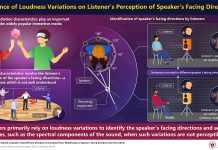
ChatGPT, known for its chatbot features, released a new plugin called Code Interpreter in December 2022. Since its launch, the tool has caught the eye of teachers, companies, and everyday people.
It’s particularly promising for students, according to Gangqing “Michael” Hu, a professor at West Virginia University (WVU).
Hu sees the plugin as a cost-effective way to make coding more approachable in science, technology, engineering, and math (STEM) fields.
By making coding more user-friendly, it encourages students to dig deeper into data analysis and learning.
The Limits for Bioinformatics Researchers
However, when it comes to specialized scientific work like bioinformatics, the plugin falls short. Bioinformatics is the area where biology meets computer science, and it’s essential for big medical breakthroughs like targeted cancer treatments.
Hu’s team tested Code Interpreter and found that it can’t yet handle the advanced needs of this field. For instance, it only supports Python programming and doesn’t provide access to internet data—essential for downloading large genome files.
Also, it can only work with relatively small files and doesn’t support multi-tasking for large datasets, which makes it slow for serious research.
Another issue is the lack of features for privacy and safety, which are critical for medical research.
These limitations are outlined in a study published by Hu’s team, which calls for future improvements like internet access for downloading genome data, software tailored to bioinformatics needs, increased storage, and support for more programming languages.
Strengths and Future Possibilities
Despite its limitations, Code Interpreter has some advantages even for specialists. It helps users identify if an answer is correct or made-up, known as a “hallucination,” by showing the code that leads to a particular answer.
This feature makes it useful as a teaching tool to explain how conclusions are drawn from data. Hu even plans to use it in his classes next year to teach data visualization.
The research team, which includes experts from other universities, also suggested improvements to make Code Interpreter more versatile.
They believe these upgrades could extend its application to various fields like finance and economics, beyond education and basic coding tasks.
Hu remains optimistic about the future of this plugin and anticipates further upgrades.
As artificial intelligence continues to evolve, he plans to keep exploring its potential uses, hoping that future versions will break down the current barriers in bioinformatics.
So, while Code Interpreter has proven itself as a helpful learning tool, its journey to becoming a resource for specialized scientific research is still a work in progress.
The study was published in the Annals of Biomedical Engineering.
Source: West Virginia University



